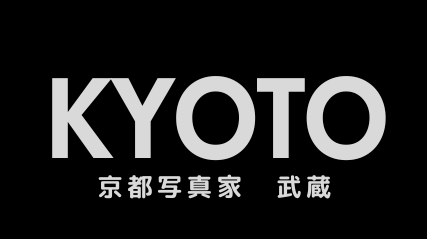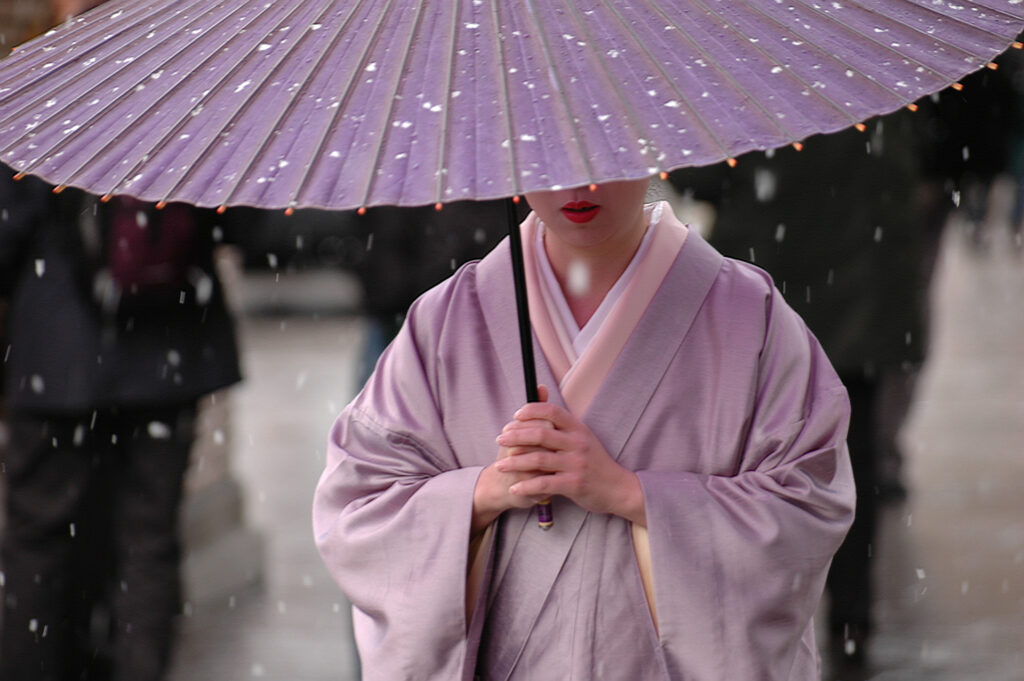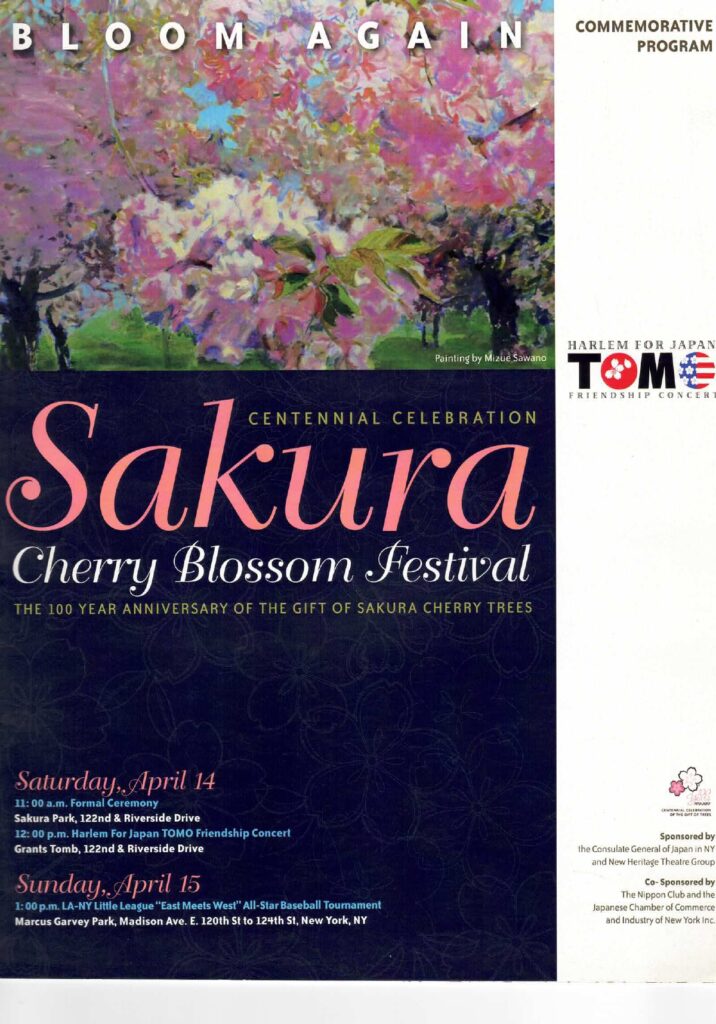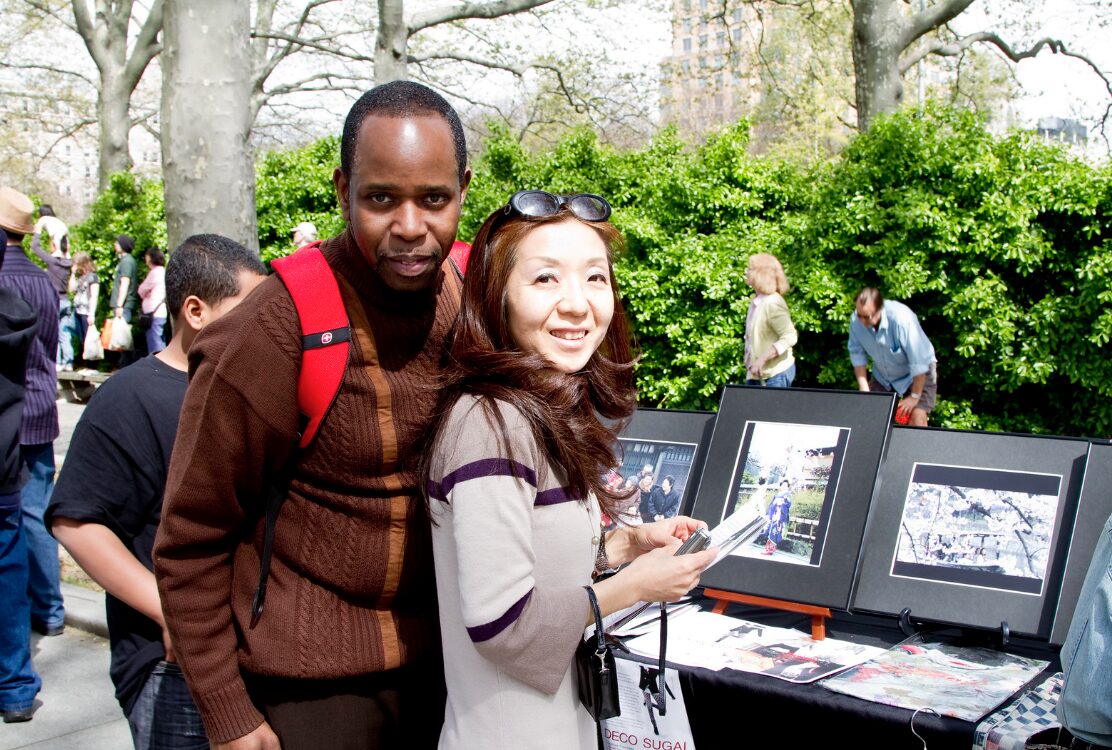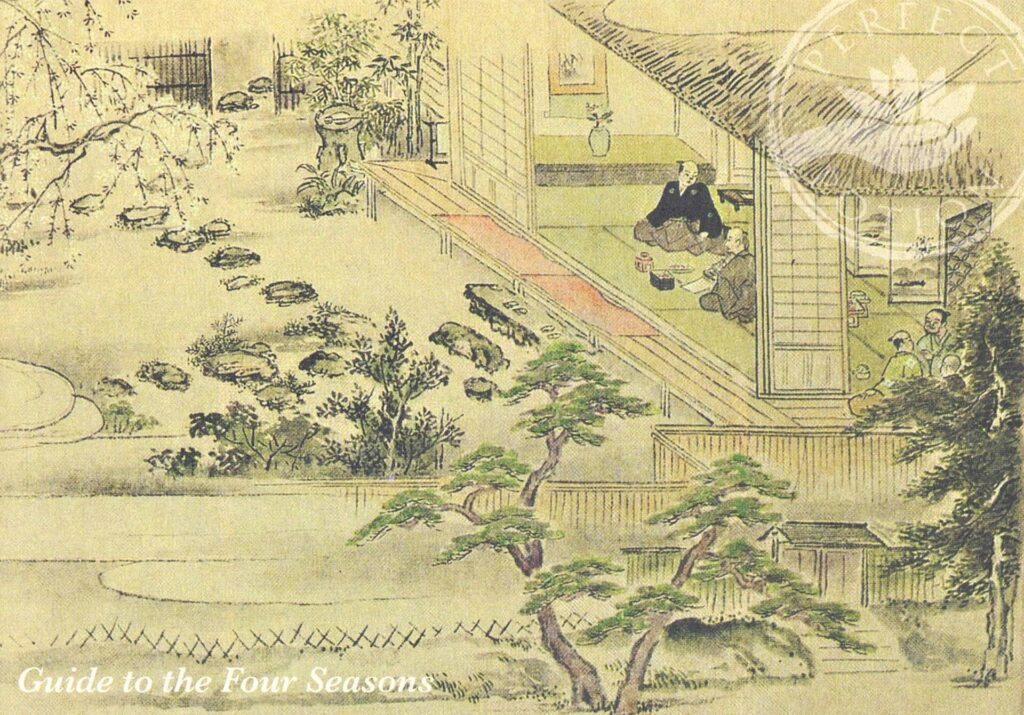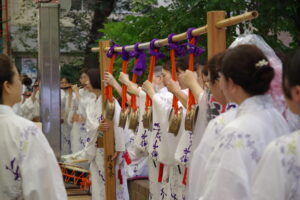Shinsen-en, located in Kyoto’s Nakagyō Ward, is a historic garden originally created during the Heian period as a private retreat for the emperor. It is also known as the birthplace of the famous Gion Festival.
In 869, during an outbreak of plague in the capital, Emperor Seiwa ordered a purification ritual (goryō-e) to be held at Shinsen-en. Sixty-six hoko (halberds), representing the regions of Japan, were erected, and the deity of Gion Shrine (now Yasaka Shrine) was invited to calm the vengeful spirits. This event marked the beginning of what would later become the Gion Festival.
Today, on May 4, members of the Heisei Onnaboko Sayane-kai performed celebratory hayashi (festival music) at Shinsen-en. The joyful sounds carried on the early summer breeze gently echoed the enduring spirit of prayer and tradition rooted in this sacred place.
Even now, Shinsen-en continues to be a living symbol of faith and cultural heritage.
Photographed using a Canon EOS R6 with an EF 24–70mm F4L IS USM lens.
Message from the Photographer
写真家からのメッセージ
In recent years, the rapid surge in inbound tourism and, in particular, the influx of entrepreneurs from China have had a considerable negative impact on the cityscape of Kyoto.
My photography work focuses on quietly observing and documenting these changes in Kyoto, with the aim of preserving its transformation for future generations.
Now, in the Reiwa era, my hope for the Gion Festival is this—
that it may become a catalyst for the revival of the peaceful and beautiful Kyoto landscape that once was.
近年、急増するインバウンド観光や、特に中国からの起業家による進出が、京都の街並みに少なからぬ悪影響を与えています。私の写真活動は、そんな変わりゆく京都の姿を静かに見つめ、記録し、後世に残していくことに重きを置いています。
令和の時代を迎えた今、「祇園祭」に願うのは――
かつてのような、平和で美しかった京都の景観が、この街にもう一度よみがえるきっかけになることです。
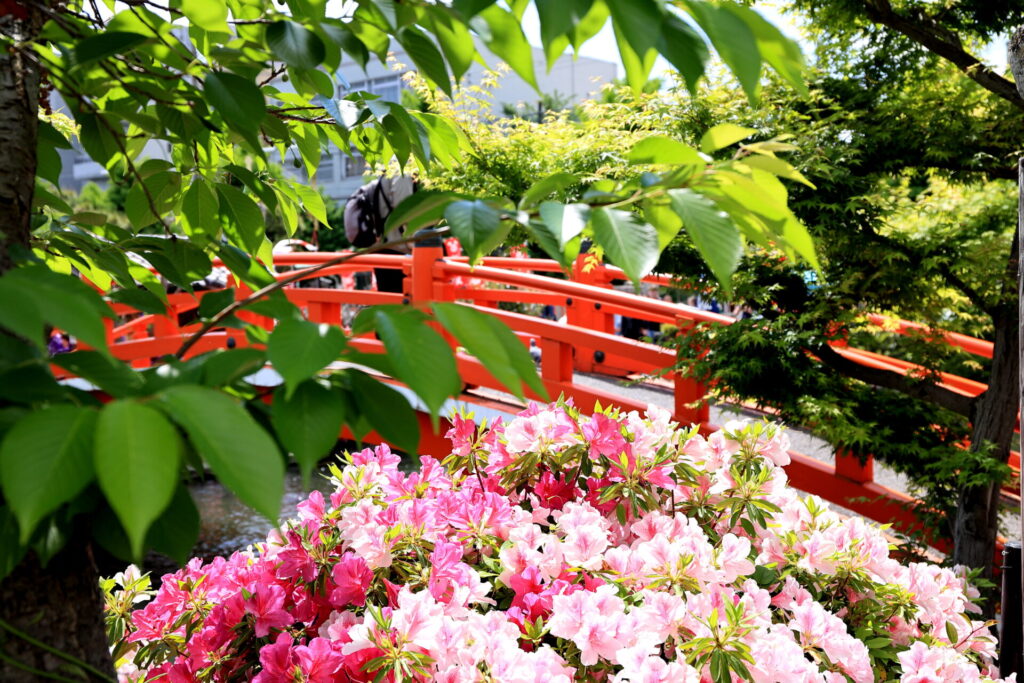
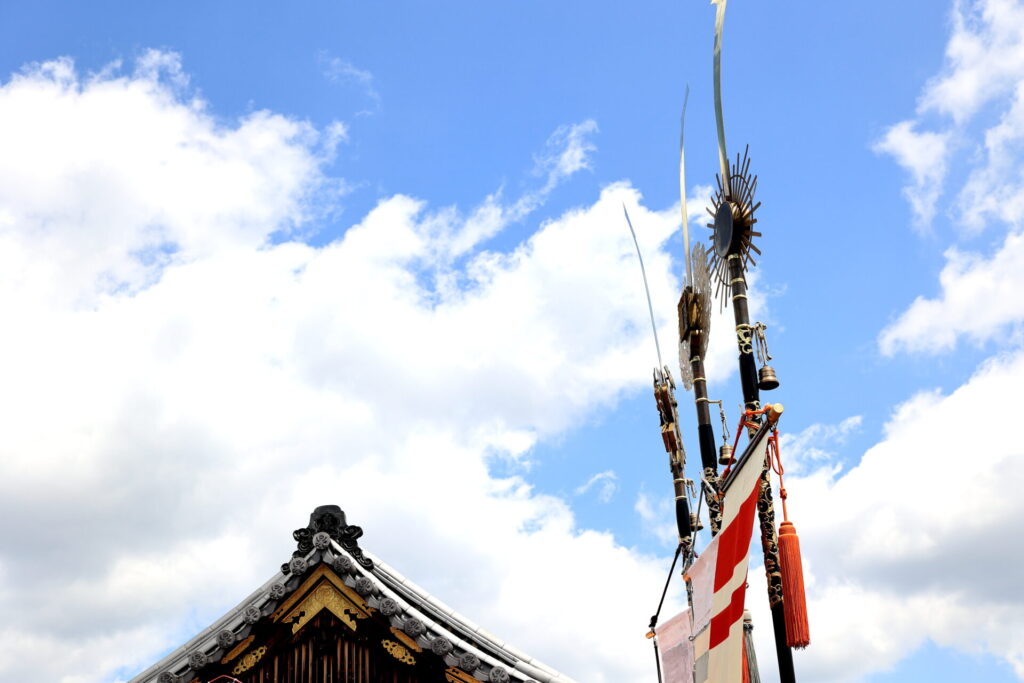
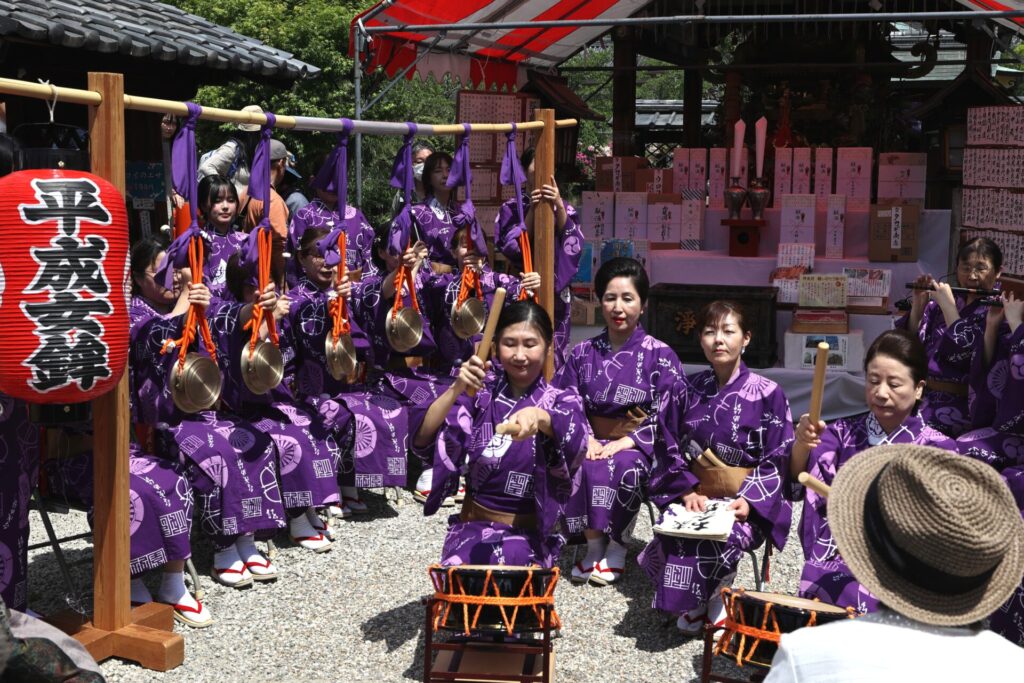
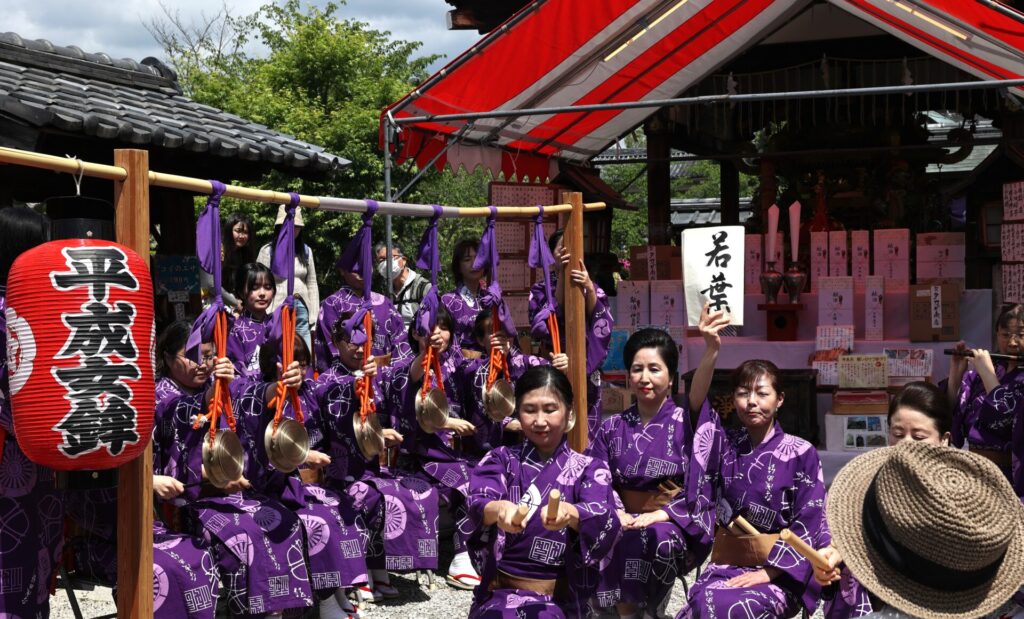

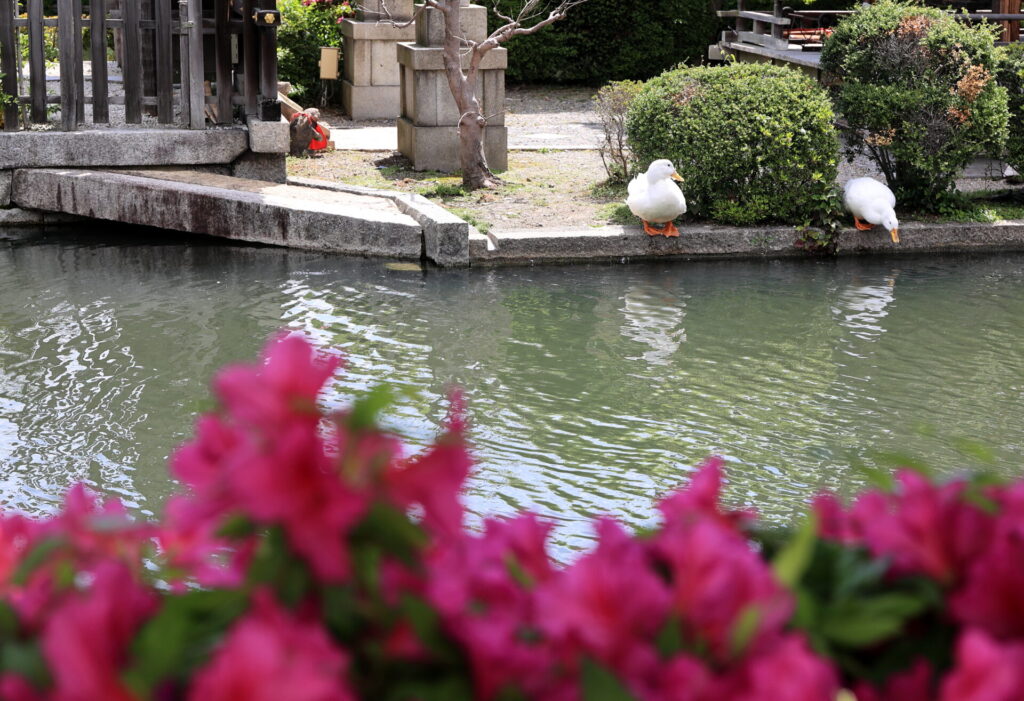
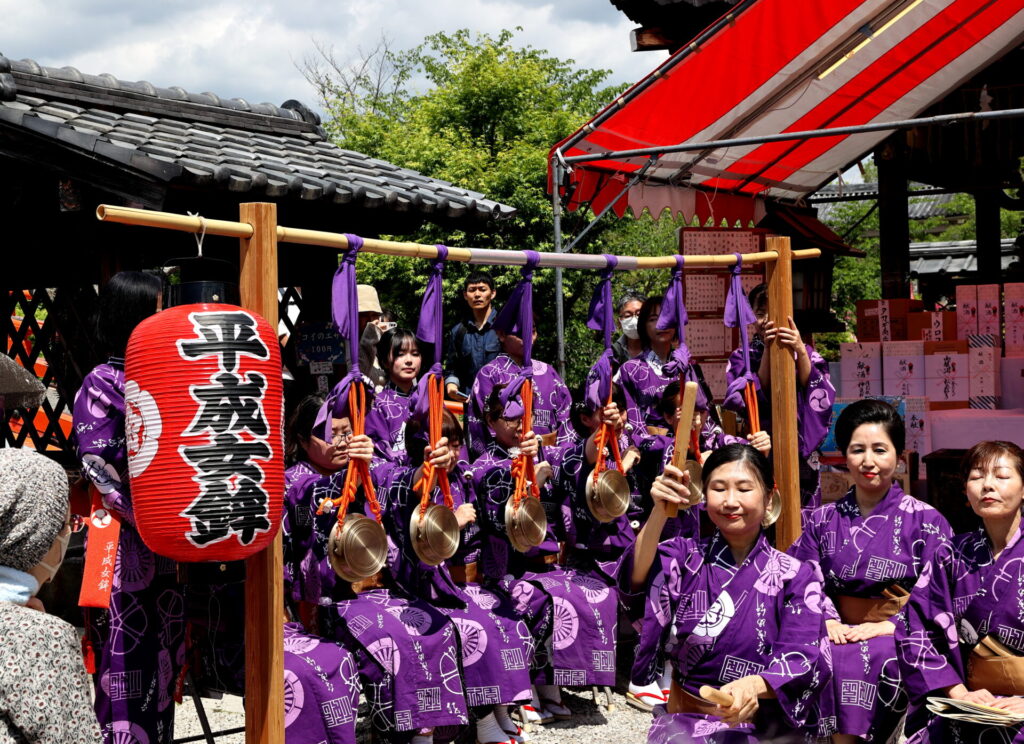
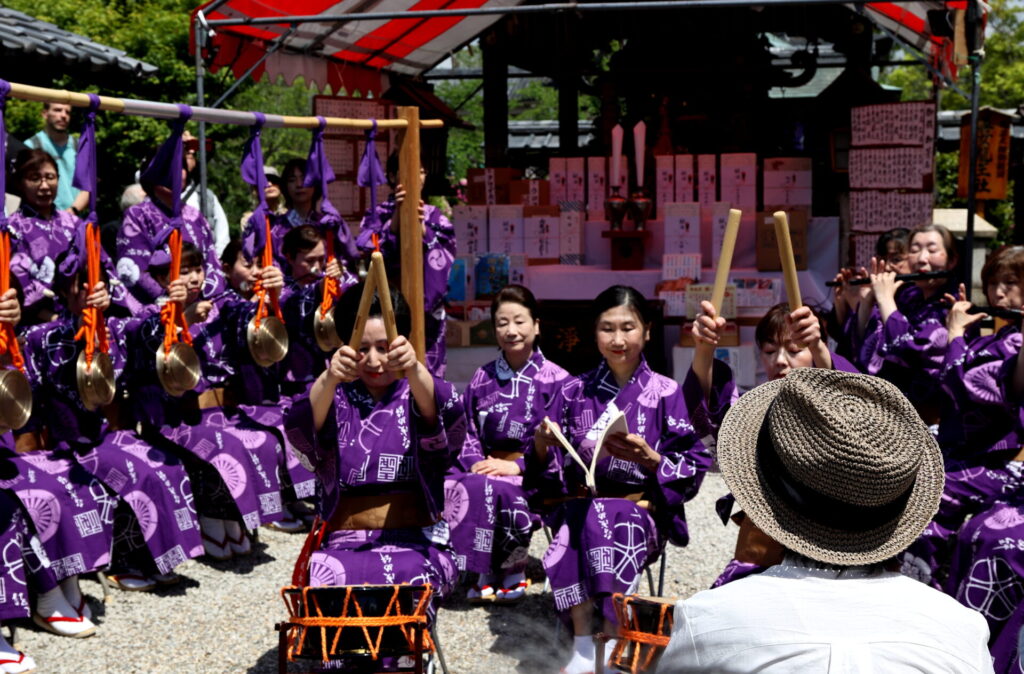
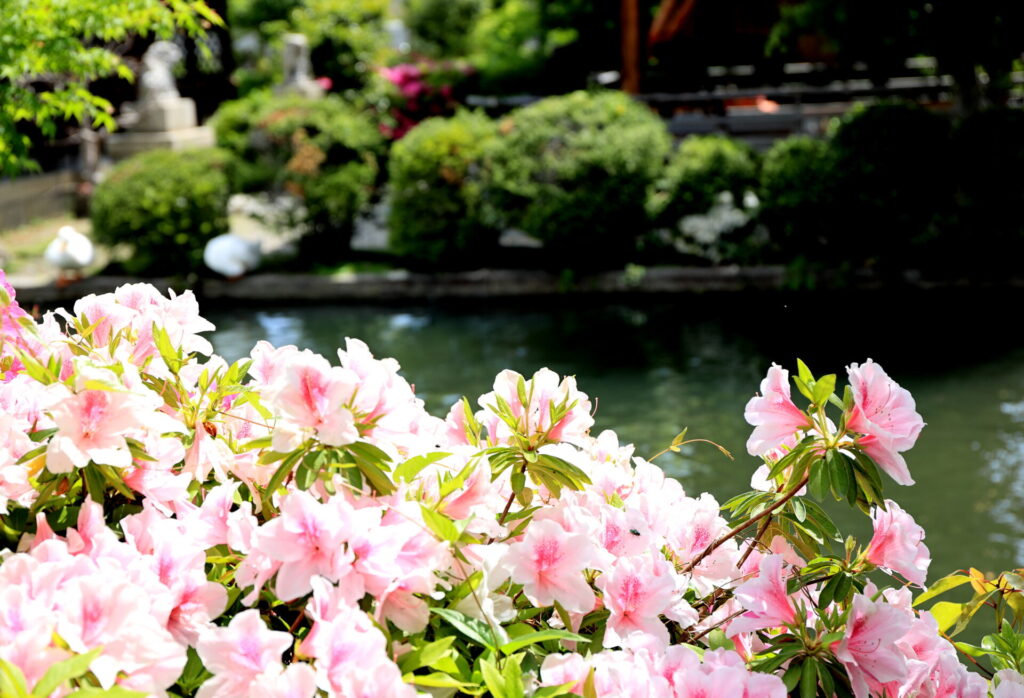

5月5日付け京都新聞
The May 5 edition of the Kyoto Shimbun
神泉苑祭での平成女鉾清音会による祇園囃子奉納を取材に来ていた京都新聞の記者に、京都市民の心に響く、現在のインバウンドや中国人起業家の進出による影響を批判する記事を執筆してほしいと依頼しました。祇園祭は、平安時代に疫病の流行を鎮めるために始まり、今も市民の祈りと伝統が息づいています。しかし、記事はまさに平和ボケそのものであり、京都の文化や伝統を守るという意識が欠如しています。京都の破壊はますます進んでおり、このままでは祇園祭の本来の意味すら薄れてしまうのではないかと危惧しています。
I asked a reporter from the Kyoto Shimbun, who was covering the Gion Bayashi performance by the Heisei Onna Hoko Seionkai at the Shinseinen Festival, to write an article criticizing the impact of current inbound tourism and the influx of Chinese entrepreneurs on the hearts of Kyoto citizens. The Gion Matsuri began in the Heian period to quell an epidemic, and it still carries the prayers and traditions of the city’s people. However, the article reflects the very essence of complacency, showing a lack of awareness about preserving Kyoto’s culture and traditions. The destruction of Kyoto is progressing more and more, and I fear that, if this continues, the true meaning of the Gion Matsuri may gradually fade.
